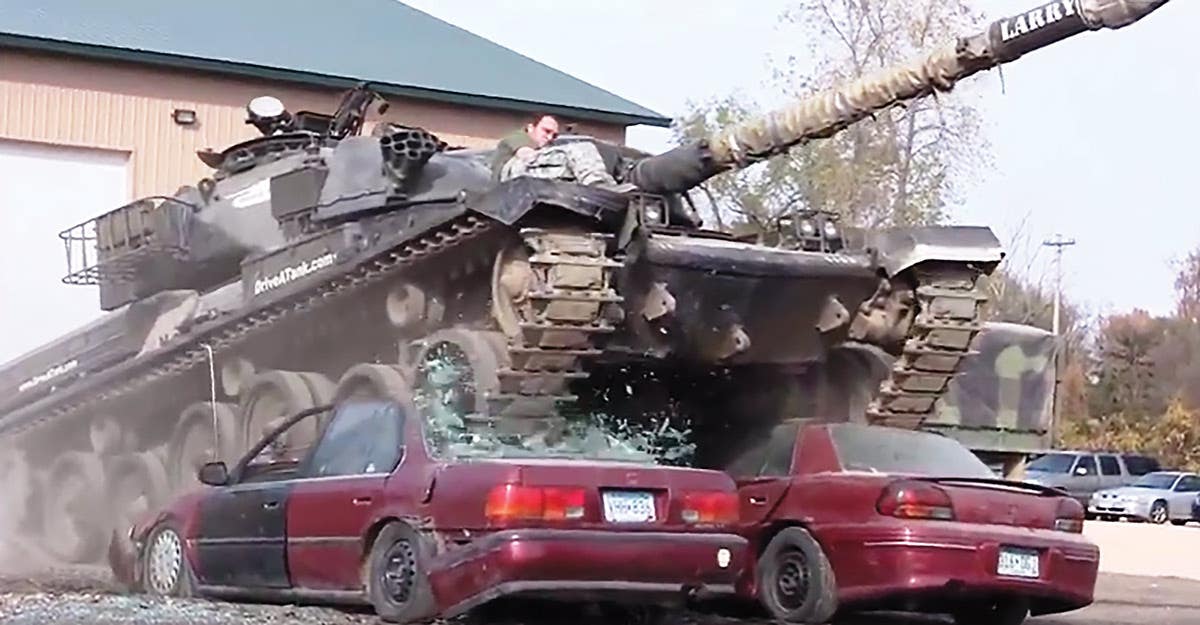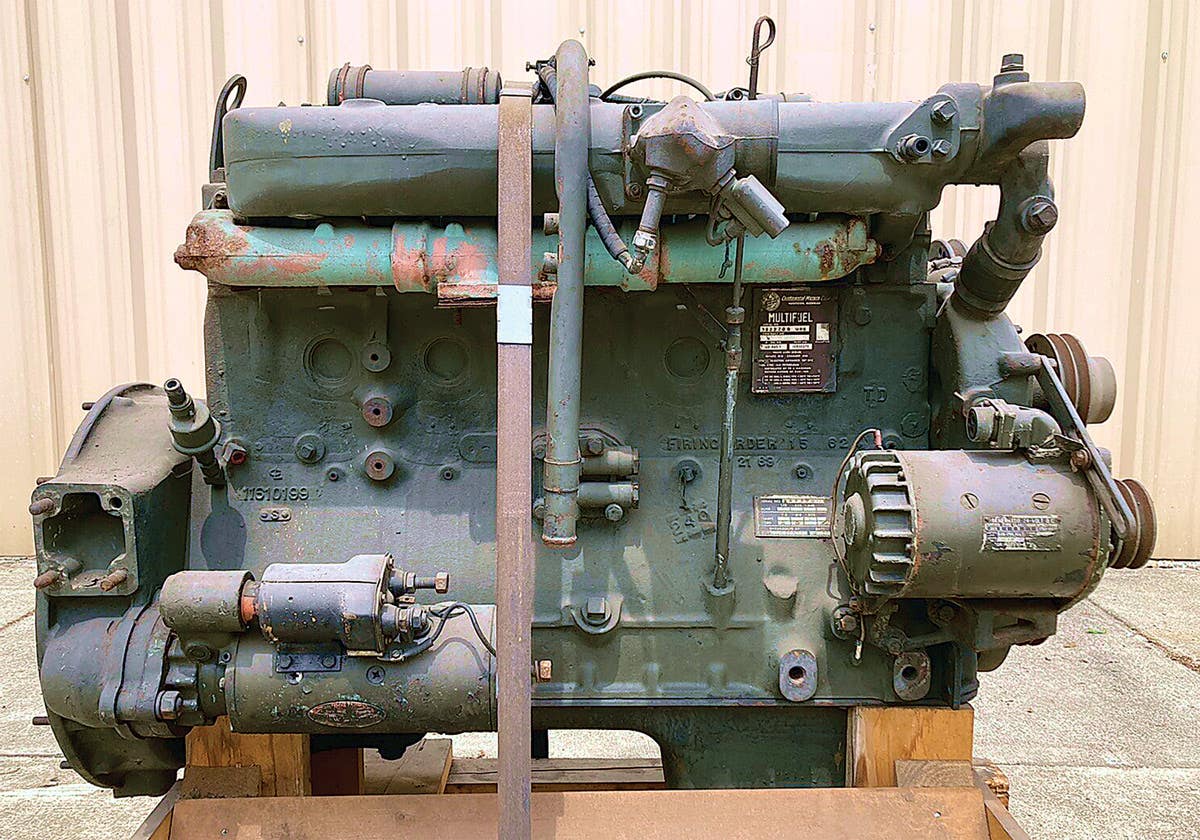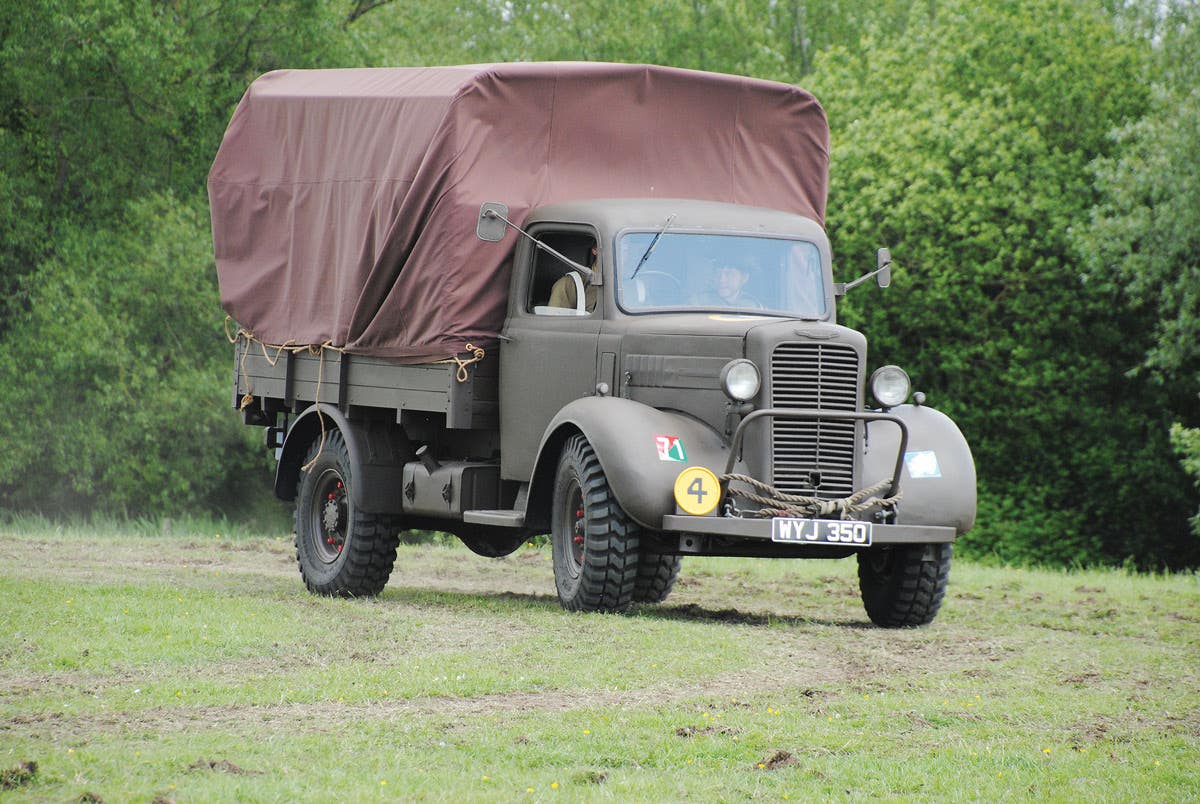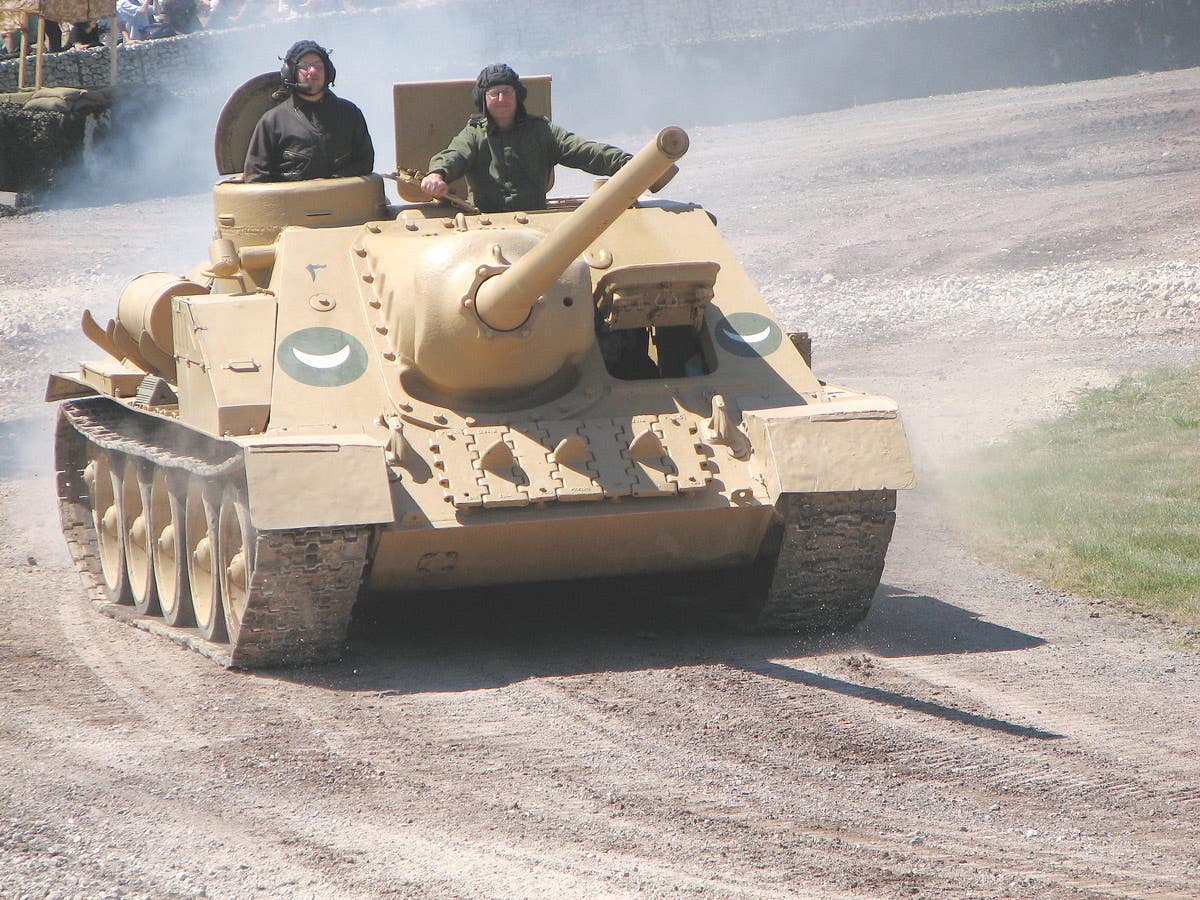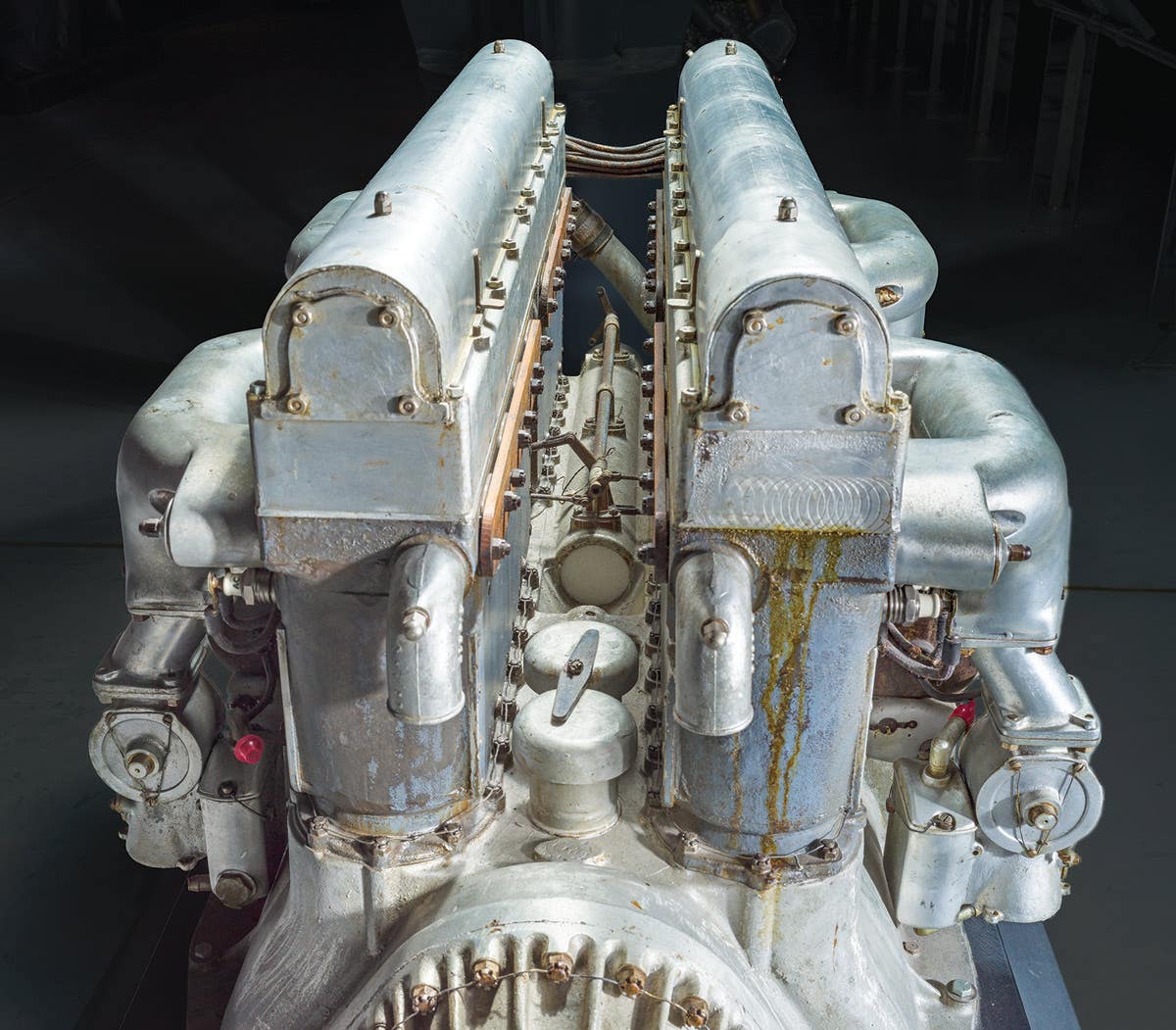It’s a MUTT! Background and History
by Steve Turchet I was 17 when I first saw an M151 Military Utility Tactical Truck (“MUTT”). In fact, I saw about 20. Although I had loved jeeps from a…
by Steve Turchet
I was 17 when I first saw an M151 Military Utility Tactical Truck (“MUTT”). In fact, I saw about 20. Although I had loved jeeps from a very early age, I had not kept current in regard to U.S. military vehicles and assumed M38A1s were still the official jeep of the times.
In the summer of 1967, I was working at a lake and recreation close to Camp Roberts in central California and saw a convoy of MUTTs approaching on a two-lane country road. It was a sunny afternoon but their headlights were on—I didn’t know that was SOP—and it was hard to see any details in the distance.
When I finally distinguished the flat front fenders, I thought of M38 jeeps. This was logical since I was driving my own former military M38. But the next feature I noticed were the horizontally-barred grilles. I thought someone had very deliberately changed the appearance of these vehicles so they wouldn’t be mistaken for jeeps. I was right about that, though it would be many years before I found out why.
My M38 was still olive-drab with faded white stars, which amused the young soldiers in the MUTTS, who grinned and flashed peace signs as we passed in opposite directions. I was doing about 45 mph, and they were maybe hitting 50, so there wasn’t time to make many assessments. My impression was that the vehicles were “modern M38s.”
But why were their grilles horizontal?
A question often asked by newcomers to the historical military vehicle (HMV) hobby— most old-timers have already made up their minds, one way or the other—is a MUTT a Jeep? These days, the general public calls any small SUV a jeep, although it’s rather like saying that Chevrolet makes pickup trucks so all pickup trucks must be Chevys.
Most people will agree that a MUTT is certainly jeep-like; a quarter-ton utility truck of about the same size. In addition, the M151, though originally designed and built by the Ford Motor Company, was also built by Willys Jeep. Lastly, most GIs called the vehicles, “jeeps.”
Technically speaking, however, at what point does a vehicle’s appearance, construction and design, differ enough from another’s so it is something else? If appearance alone is the deciding factor, one might argue that the M38Al, with its rounded front fenders is also not a jeep compared to the Ford GPW, the Willys MB, and M38. In the case of the M38Al, and except for what was basically only a redesigned doghouse for the taller F-head engine, it was almost mechanically the same as earlier flat-fender jeeps. It had the same body-on-frame construction, and used the same solid-type axles and leaf spring suspension, as well as many components that would interchange with earlier jeeps. Even to the military, it wasn’t an entirely new vehicle, and was only given the “A1” designation to differentiate it from the M38. Lastly, it was designed and built by Willys Jeep, who had trademarked the Jeep name in 1946.
On the other hand, the M151 was, indeed, a completely new and different vehicle, designed and built by a different company, and received an entirely new designation. The MUTT featured a unibody construction, independent coil-spring suspension with swing-arm axles, as well as an entirely different engine, transmission, and transfer case than a jeep. Except for standard M-series components, such as dashboard instruments, light switches, and lamp assemblies, almost nothing was interchangeable between MUTTs and jeeps. So, for the purpose of this article, a MUTT is not a jeep any more than all pickup trucks are not Chevys.
WHY A “MUTT”?
Most Vietnam and Cold War veterans will tell you, “We never called them MUTTs.” In fact, “Jeep” was the preferred soldier vernacular for all of the M151 1/4-ton variants.
Unlike the name, Jeep, which was originally a nickname, MUTT was an acronym for “Military Utility Tactical Truck.” Even though most soldiers may not have used the term, the Army most certainly did. Ford documents from the early 1960s reveal that the term “MUTT” was extensively used. An April 23, 1964, document discovered in the Ford archives by Jim Gilmore even credits the Army with originating the term.
So, whether you never heard or used the term, MUTT,” it is an expression from the period that the U.S. Army and Ford Motors used on a regular basis to refer to the “new” jeep.
HORIZONTAL GRILLE
As I noticed on that long-ago afternoon, the most readily apparent first-glance difference is the horizontally-barred grille, which made me think that someone wanted to be darn sure it wouldn’t be mistaken for a jeep. That someone, of course, was Ford. It should be remembered that Ford’s original prototype “jeep,” the GP, had been rejected by the U.S. military in favor of the Willys prototype in the early 1940s. Adding insult to injury, Ford was contracted to produce Willys Jeeps. It’s ironic that what would become one of the Jeep’s signature features, the stamped-steel vertically-barred grille, was actually a Ford innovation.
While some experts claim that Willys later patented the design so no one else could use it, there were obviously many vehicles of other manufacturers featuring grilles with vertical bars. It should also be remembered that Ford was vindictive. When his M151 was chosen for production in the early 1950s, he would have wanted to be sure that its grille was distinctively different from a jeep’s, yet also reminded his rival that it had been his idea. What better way than to give the MUTT a very similar grille rotated 90 degrees?
ADOPTING THE M151
First-generation M151s entered U.S. military service in 1960. As a series, the MUTT achieved a longer service life than the MB, GPW, M38, and M38Al jeeps combined. Although MUTT production ended in 1982, many remained in U.S. military service for over another decade. MUTTs served along with HMMWVs in the Gulf War; and as late as 1997 at least one Marine Corps MUTT was still on active duty. Additionally, MUTTs remain in service with many armed forces around the world, and most of their parts are still readily available from surplus and reproduction sources.
The M38 and M38Al were never meant to be long-term replacements for the WWII jeeps. During the early 1950s, various experimental (XM) MUTTs were designed and built by Ford. Some were conventional body-on-frame designs with solid axles and leaf spring suspensions, while others were more exotic, such as one with an all-aluminum body.
The military chose a prototype with a steel unibody design, that is, it had no separate frame and chassis. It featured coil springs at each wheel, and swing-arm axles front and rear with rigidly-mounted differentials.
While the swing-arm axle was a modern system for its day, it was actually primitive for its type. As a result, both the vehicle and the GIs who drove it would suffer for many years to come. There would be denials of any design flaws And blame was shifted to driver error when any MUTT rolled over—often under normal driving conditions on good, level roads and at low speeds!
M151s were equipped with standard M-series components, light switches, tail lamps, and dashboard instruments, including a 24-volt waterproof electrical system. Early production units were fitted with the small WWII-style blackout marker lamps in their grilles, and a blackout driving light on the left front fenders. Like the MB, GPW, M38, and M38Al, early M151s had only one service tail/stop lamp. They did not have parking lamps or turn signals. The windshields were two-piece like the M38Al and equipped with vacuum wipers. Fuel pumps were in-tank electric.
Unlike jeeps, with their three-speed transmissions and two-speed transfer cases, the MUTT featured a four-speed transmission with very low first and reverse gears. Therefore, it only needed a single-speed transfer case for four-wheel-drive.
For highway operation, the MUTT was driven like a three-speed, using second gear to start. While some XM prototypes were equipped with Ford industrial engines, the most common production powerplants were Continental OHV four-cylinder, in-line, liquid-cooled, with a displacement of 141.5 cid and a 71 hp rating at 4,000 rpm, and Hercules engines of the same design with 151.5 cid and a horsepower rating of 65 at 4,000 rpm.
BETTER THAN A JEEP?
Was the M151 a good vehicle and actually superior to the jeep? In most respects, yes. Even though it had about the same permissible road speeds as a WWII jeep, the MUTT’s engine could tolerate more abuse and higher rpms. Thus, it could cruise at higher speeds instead of straining to reach them.
Because of its swing-arm axles with high-mounted differentials, it had better ground clearance than jeeps, yet a lower silhouette than the M38Al. Repair and maintenance were in many respects simpler to perform than on a jeep. A motor-pool sergeant once remarked that one could “fix just about anything on a MUTT with two screwdrivers (a slotted and a phillips), plus a basic set of wrenches.” He failed to mention, though, that one needed a large socket and breaker-bar to reset the wheel bearings every 500 miles!
Nevertheless, there were rollover accidents, though it was generally assumed that since the M151 was a faster, more agile vehicle than a jeep, its young GI drivers were pushing it too hard around corners and on side slopes. Still, there were reports of rollovers occurring at low speeds on level ground, as well as at higher speeds on straight, level roads.
AN UPDATE: M151A1
In 1964, a slightly improved version of the MUTT went into production and was designated the Ml5lAl. The differences were mostly cosmetic.
This new MUTT still had the WWII-type blackout marker lamps in the grille, but small bullet-shaped parking/turn-signal lamps were added atop the front fenders, and the vehicle was equipped with two service tail/stop lamps to accommodate a turn-signal system. An additional small lamp was mounted on the right rear to serve the blackout stop function. Some M151s were retrofitted this way.
Early Ml5lA1s had cast magnesium wheels to save weight, but since magnesium is a metal that burns, this wasn’t wise on a military vehicle. These wheels were also prone to cracking, so a switch was made back to steel wheels but with more holes to make them lighter.
The most significant, though least visible, update was a heavier rear suspension. This was not done in response to the increasing number of rollover accidents, but rather to allow the vehicle to be armed with heavier weapons and carry greater loads, which had been proving too much for the original rear suspension.
Production of the M151A1 continued until 1969, with MUTTs being built at times by both Ford and Willys (later Kaiser Jeep). One may assume that production was increased to meet the demands of the rapidly mounting war in Vietnam. An M151A1 variant was built to carry the recoilless rifle (M151A1C), and there was a long-bodied variant (M718) which served as a front-line ambulance. The unibody was not stretched on these longer MUTTS, but was, instead, extended to the rear. Therefore, these vehicles retained the same wheelbase.
As the number of MUTTs in service increased, so did the frequency of rollover accidents, including those occurring at low speeds under normal driving conditions. There were many injuries to drivers and passengers, along with a growing number of fatalities. One government report stated that in 1967: “The M151 was involved in 3,538 accidents that resulted in 104 deaths and 1,858 injuries.” This report went on to state that: “36 percent of the accidents were due to the vehicle overturning in a non-collision situation.” Most of these were blamed upon “operators not being sufficiently trained,” and/or “operator error.” In short, the military continued to blame its troops for driving MUTTS too fast and/or cornering too sharply, though it did update its MUTT driver course to make soldiers “more careful.”
Still, the government had been doing tests of the M151A1 in which it was found that the rather primitive swing-arm suspension contributed to oversteer. This oversteer, along with the fact that MUTTs didn’t lean into corners like vehicles with conventional suspensions, gave the driver no warning when the vehicle reached a point of instability. Upon reaching this point, it took only a tug on the steering wheel, a bit of over-correction, or a sudden lane-change, either at low speeds when rounding a corner, or at higher speeds on a straight level road, for the vehicle to go out of control and flip over.
These tests concluded: “The tires used by the U.S. military and many allied forces, are of the Non-Directional Tread (NDT) type. Simply stated, this means there is no specific tread pattern: the tire is made for gripping soft soil or wet, unimproved surfaces. Operators of the M151 displayed a propensity for application of civilian automobile handling characteristics in their driving habits, but in fact were driving a primarily off-road vehicle with no tread on the tires.”
THEY CUT THEM UP AND CRUSHED THEM!
Around the same time as the upgrades to the M151A1, the military decided that no more MUTTs would be sold to civilians as drivable units. Instead, the vehicles were usually sliced in half crosswise with a cutting torch.
When it was found that people were welding the halves back together, some MUTTS were quartered in an X pattern. Still, people welded them back together, so an order was issued that the mechanical components be removed and the body mutilated... generally crushed by a tank or bulldozer.
Since mutilation was often left up to a civilian contractor, complete MUTT bodies were commonly smuggled out in truckloads of scrap. Registering reconstructed or smuggled MUTTs for civilian use was simple because early models had their serial number plates riveted to the transmission hump cover—more easily switched than the glove box doors of M37s.
UPGRADED TO M151A2
By the late 1960s, the MUTT had gained such a reputation in the military for being prone to rollover that major efforts were finally made to fix the problem. Among the proposed solutions were MUTTs fitted with conventional jeep-type solid axles and leaf springs, either just on the rear, or both front and rear.
One such prototype was the Ml5lA2-LC, with axles and suspension like the M38A1 jeep. But, besides reducing ground clearance and creating parts interchange problems, this required expensive modifications to the vehicle’s unibody, which had never been designed for a leaf spring suspension.
At last, in 1970, a complete redesign of the rear suspension was ordered. The old swing-arm was changed to a semi-trailing arm. This gave the MUTT handling characteristics similar to those of a solid-axle vehicle while still maintaining agility and ground clearance. It also provided maximum parts interchangeability with the older units. This updated MUTT was designated the Ml5lA2, and many were built by AM General Corporation.
Additional, minor changes were made during M151A2’s service life. Early model MUTTs had noisy differentials, so quieter units were designed. M151A2s were equipped with the new composite blackout, parking and turn-signal lamps. A Rollover Protection Kit (ROPS) was developed for the Ml5lA2, and also as a retrofit for earlier MUTTS. This was basically a roll cage with cargo-net style webbing to keep driver and passengers from being ejected.
Other improvements included a deep-dish steering wheel, one-piece windshield, and electric windshield wipers. The fuel pump was changed from in-tank electric to engine-mounted mechanical, and the brake system updated to a dual-circuit type. Late model Ml5lA2s had solid-state ignition systems and alternators instead of generators.
A GOOD VEHICLE FOR COLLECTORS?
All of this brings up a question often asked by someone considering the purchase of a MUTT: Are they safe?
“Safe” compared to what? One of today’s cars with shoulder belts, air bags and crash zones? No. But neither is any stock military jeep, an M37, an M715, or many other common HMVs.
Of the three basic models, the early M151 is undoubtedly the least safe. However, MUTTs in civilian hands have had far fewer rollover accidents—probably because most HMV owners put a lot of loving care into their vehicles and drive them accordingly.
Still, a MUTT owner should always be aware that situations may arise. Being cut off by another driver on the freeway or having a child dart into a street may cause a potentially dangerous maneuver.
Common M151 variants include the M107 and M108 communications vehicles with radios in the rear. The passenger seat is rear-facing for the radio operator.
The M718 and M718A1 are ambulance versions based on the M151A1 and Ml5lA2, crewed by a driver and a medical attendant. These MUTTs have the extended body with a rear overhang and can carry a stretcher and three seated patients, two stretchers and two seated patients, or three stretcher patients.
The M151AlC 106mm Recoilless Rifle Carrier is based on the M151A1. It was replaced by the M825 based on the M151A2, which has the M40 106mm recoilless rifle mounted in the rear. This model in turn was replaced by a similar vehicle mounting the Hughes TOW ATGW missile. MUTTs were also fitted with searchlights and mine-detecting gear. Many MUTTs in Vietnam had armor and “personal accessories” added to them.
While production of the M151A2 ceased in 1982, AM General reputedly still holds the contract to build MUTTs on an as-needed basis. Thousands of MUTTs are still on active duty with many armed-forces all over the world.



